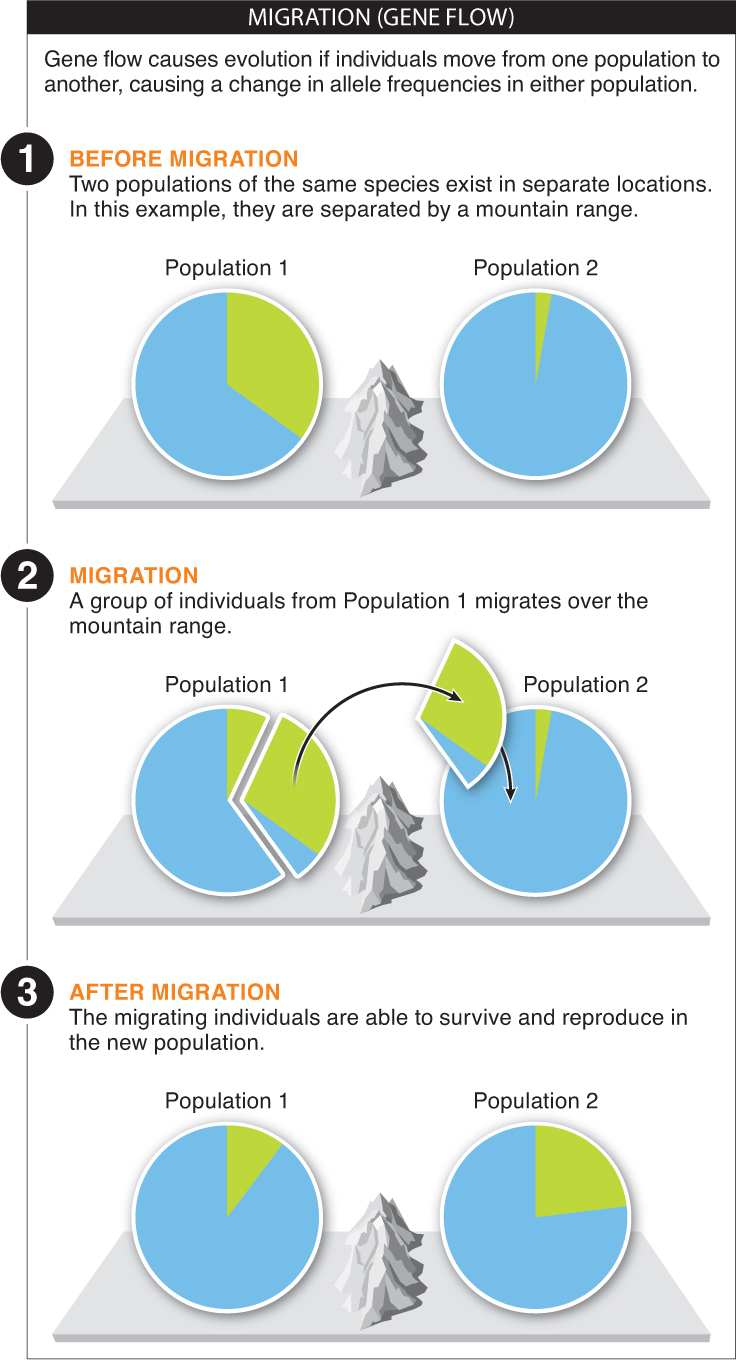The third mechanism of evolutionary change is migration. Migration, also called gene flow, is the movement of some individuals of a species from one population to another (FIGURE 8-15) This movement from population to population within a species distinguishes migration from the founder effect, in which individuals migrate to a new habitat previously unpopulated by that species. If migrating individuals survive and reproduce in the new population, and if they carry a different proportion of alleles than the individuals in their new home, then the recipient population experiences a change in allele frequencies and, consequently, experiences evolution. And because alleles are simultaneously lost from the population that the migrants left behind, that population, too, will experience a change in its allele frequencies and, thus, will evolve.

Gene flow between two populations is influenced by the mobility of the organisms and by barriers, such as mountains or rivers. And as we’ll see in Chapter 16, human activities, too, can dramatically influence the migratory potential of organisms, as we sometimes transport species. This can happen intentionally, as when people purchase exotic pets or non-
TAKE-HOME MESSAGE 8.8
Migration, or gene flow, leads to a change in allele frequencies in a population as individuals move into or out of the population.
In the year 1400, almost all North Americans possessed brown eyes. Today, many North Americans possess blue eyes. Explain the basis for this evolutionary change.
Blue-eyed alleles entered North American populations through gene flow as some blue-eyed Europeans migrated into North America.
332